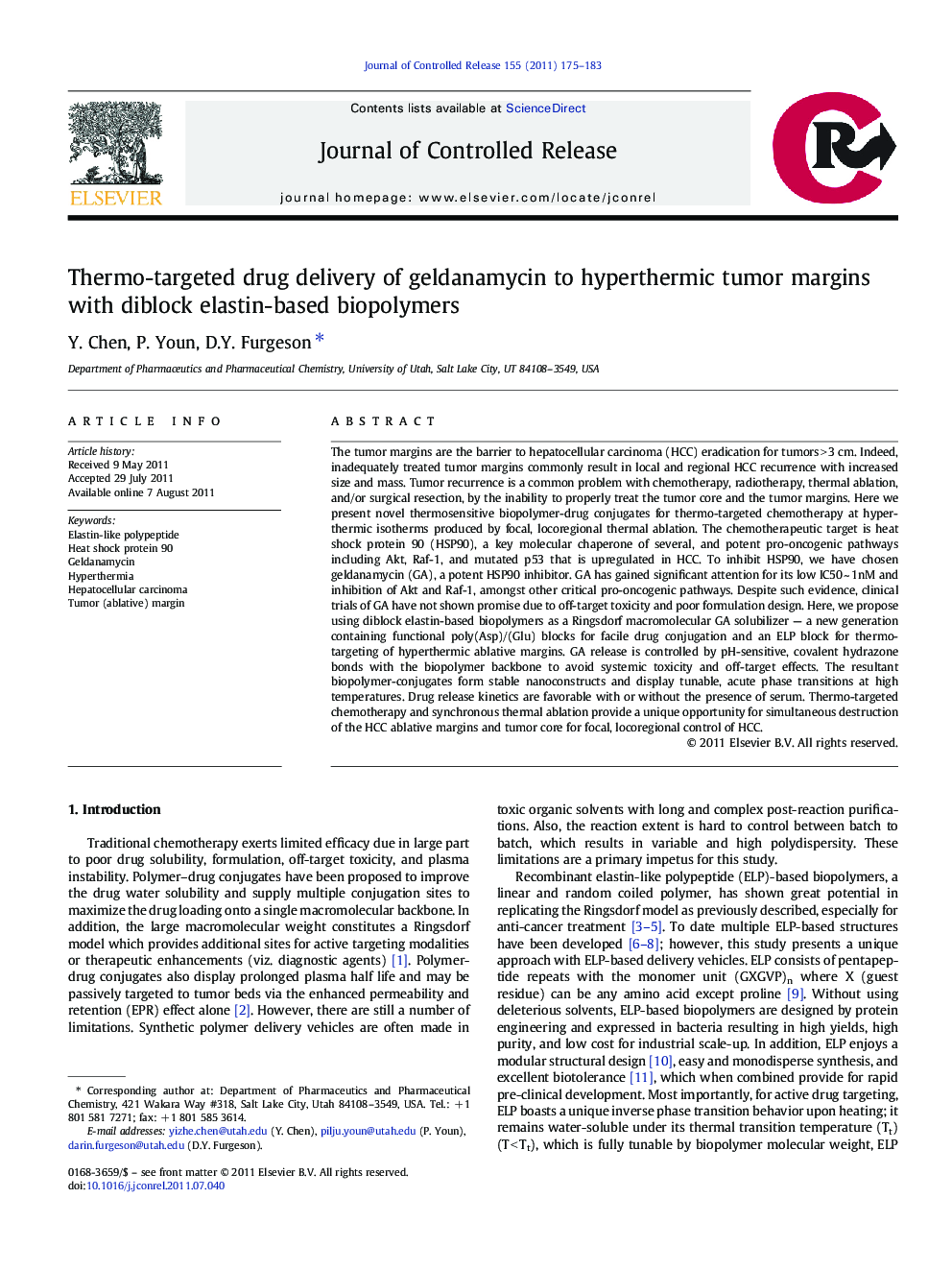| Article ID | Journal | Published Year | Pages | File Type |
|---|---|---|---|---|
| 1424727 | Journal of Controlled Release | 2011 | 9 Pages |
The tumor margins are the barrier to hepatocellular carcinoma (HCC) eradication for tumors > 3 cm. Indeed, inadequately treated tumor margins commonly result in local and regional HCC recurrence with increased size and mass. Tumor recurrence is a common problem with chemotherapy, radiotherapy, thermal ablation, and/or surgical resection, by the inability to properly treat the tumor core and the tumor margins. Here we present novel thermosensitive biopolymer-drug conjugates for thermo-targeted chemotherapy at hyperthermic isotherms produced by focal, locoregional thermal ablation. The chemotherapeutic target is heat shock protein 90 (HSP90), a key molecular chaperone of several, and potent pro-oncogenic pathways including Akt, Raf-1, and mutated p53 that is upregulated in HCC. To inhibit HSP90, we have chosen geldanamycin (GA), a potent HSP90 inhibitor. GA has gained significant attention for its low IC50 ~ 1nM and inhibition of Akt and Raf-1, amongst other critical pro-oncogenic pathways. Despite such evidence, clinical trials of GA have not shown promise due to off-target toxicity and poor formulation design. Here, we propose using diblock elastin-based biopolymers as a Ringsdorf macromolecular GA solubilizer — a new generation containing functional poly(Asp)/(Glu) blocks for facile drug conjugation and an ELP block for thermo-targeting of hyperthermic ablative margins. GA release is controlled by pH-sensitive, covalent hydrazone bonds with the biopolymer backbone to avoid systemic toxicity and off-target effects. The resultant biopolymer-conjugates form stable nanoconstructs and display tunable, acute phase transitions at high temperatures. Drug release kinetics are favorable with or without the presence of serum. Thermo-targeted chemotherapy and synchronous thermal ablation provide a unique opportunity for simultaneous destruction of the HCC ablative margins and tumor core for focal, locoregional control of HCC.
Graphical abstractFigure optionsDownload full-size imageDownload as PowerPoint slide
